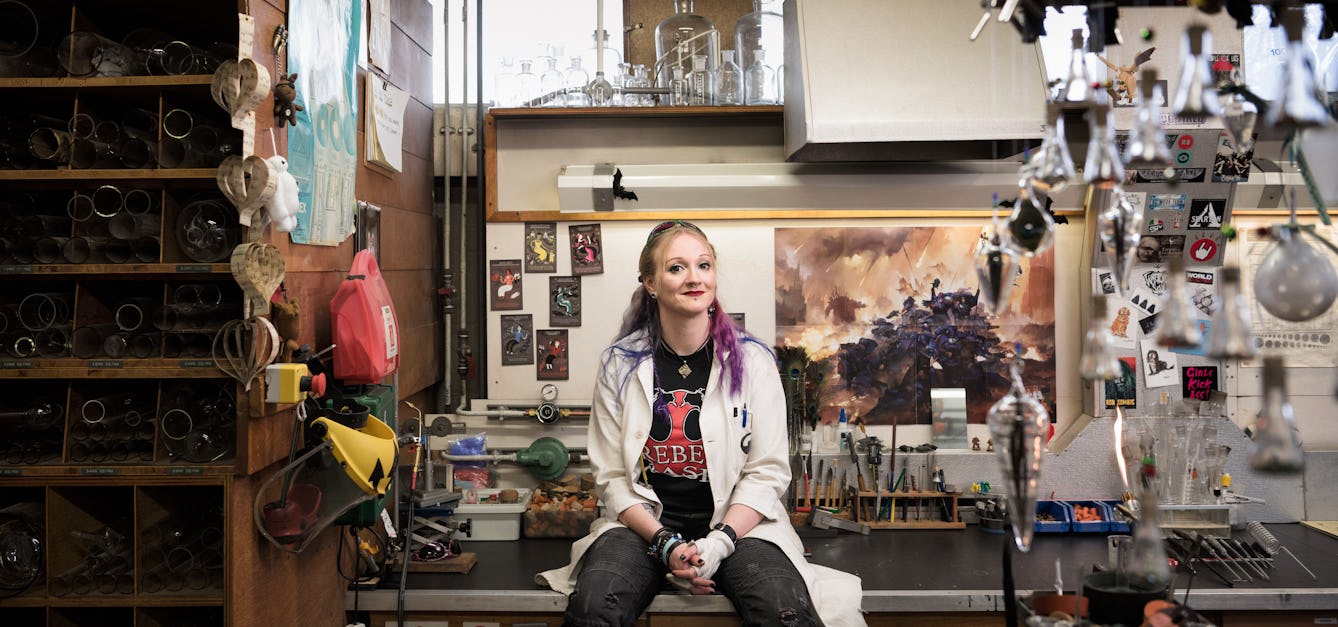Stories

- Article
The art of soundproof design
Too much noise is more than annoying – it has serious negative effects on health and cognitive ability. Find out how designers and architects are mitigating the downsides of sound.

- Article
The art of scientific glassblowing
Exciting things happen when art, craft, engineering and science collide. Glassblower Gayle Price is proof of that.

- Article
The freedom to provoke
Jamie Hale talks to performer and director Emma Selwyn about the joy of creating work that celebrates, rather than suppresses, autistic behaviours.

- Article
Acting, disableism and inclusive theatre
Deaf theatre director Jenny Sealey discusses inclusivity, community and the resilience of disabled actors.
Catalogue
- Archives and manuscripts
- Online
Camberwell School of Arts and Crafts prospectus and time-table
Date: 1938-1939Reference: SA/MAC/H.5/22Part of: Mental After Care Association- Books
The ideal book or book beautiful : a tract on calligraphy, printing, and illustration, and on the book beautiful as a whole / by T.J. Cobden-Sanderson.
Cobden-Sanderson, T. J. (Thomas James), 1840-1922.Date: 1978- Books
Ancient customs of the printing house / Joseph Moxon.
Moxon, Joseph, 1627-1691.Date: 1971- Books
The art of the paper marbler / translated [from the Encyclopédie of Diderot and d'Alembert] by Anne Renault.
Diderot, Denis, 1713-1784.Date: 1970- Books
Leonard Jay, master printer-craftsman, first head of the Birmingham School of Printing, 1925-53 : an appraisal / by L.W. Wallis.
Wallis, L. W. (Lawrence William)Date: 1963









